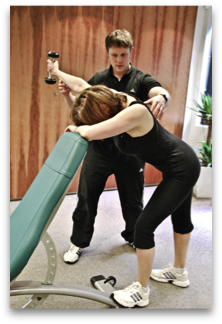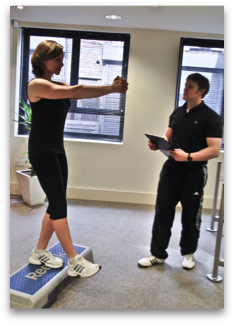
About Corrective Exercise
The Human Body likes to move. We were designed to run, jump and move around to ensure we could hunt and survive. As cavemen, we were agile athletes who could escape dangerous predators when required.
Thanks to modern day society, we no longer have to be quite so fit and strong. Our food is already packaged and prepared. Our fast cars will allow us to escape from any possible predators. The human body is no longer required to move; in fact most of us are required to sit most of the day in front of a screen in order to make a living!
The problem with this is that our complex musculoskeletal system thrives on movement. Movement is vital for the health and strength of the system.
As a result of our lifestyles, many of us have developed muscle imbalances that place our joints and muscles under stress. These muscle imbalances create faulty movement patterns- if we then begin an exercise programme with these faulty movement patterns, higher levels of stress are placed on those muscles and joints.
Many people beginning an exercise programme often break down with various injuries such as back ache or knee pain. More and more people are seeking treatments for such problems than ever before.
Corrective exercise is an effective re-balancing programme for the human body. By specifically targeting the areas that are weak, you automatically reduce the load from the overworked painful areas, bringing the body back into balance. An assessment is therefore vital in determining your body’s weaknesses.

The Lambert Performance Assessment
This provides the blueprint for your corrective exercise programme. It is important that we understand how you are currently moving, where your weaknesses are and how other lifestyle issues may be adding to this problem.
Static Posture Measurement
Static posture measurement of the spinal curves and general alignment provide strong indications of muscle imbalances. Breathing pattern is also assessed for its affect on your posture.
Movement Analysis
Movement analysis will show us which joints are being placed under stress when the body moves and which muscles are showing weakness through your movements.
Core Function Tests
As the foundation for movement it is vital that the strength of the deep muscles of the abdominals and spine are assessed. The function of these muscles is essential for pelvic and spinal stability.
Muscle Activation Technique
This involves a complete biomechanical analysis of your range of motion for all joints of the body. The key here is finding the weak muscles that are causing restriction of motion around any joint. These weak muscles are then reactivated to rebalance the musculoskeletal system before exercise begins.
Nutrition and Lifestyle Analysis
Detailed questionnaires are used to identify key areas in your life which may be overloading your system with stress. Whether it is a poor diet, bad sleeping patterns or simply not drinking enough water, the key areas will be identified.
Once this thorough assessment is complete, your individualised corrective exercise programme can be designed and you can begin your training. The first goal of training will be to strengthen specific weaknesses and correct movement patterns/posture. Once this has been achieved, training can move to the next level – such as general conditioning or a job/sport-specific goal.

